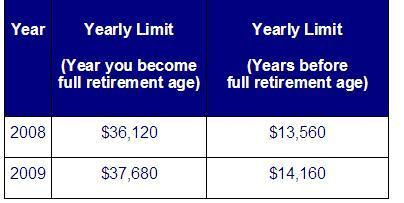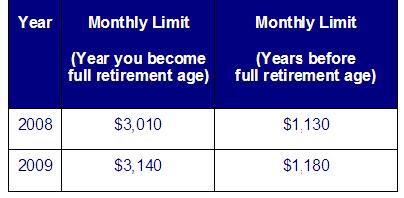Widow or Widower’s Annual Earnings Test Limits
Annual Earnings Test
The limits for a widow or widower are the same as anyone else receiving Social Security benefits. The difference is the full retirement age. Widows and widowers born before 1945 become full retirement age for benefits earlier than people filing for retirement benefits. For applying the work test, widows and widowers must use their full retirement age as if they were getting retirement benefits. See the full age retirement chart under the “retirement tab.” Widow and widower’s born 1945 or later will have the same full retirement age for both types of benefits retirement or survivor’s benefits.
Year You Become Full Retirement Age (You must use the full retirement age for retirement benefits, even if you are receiving a widow or widower benefit.)
Social Security will withhold one dollar of your benefits for every three dollars you earn over the annual limit. You count only the earnings you earn prior to the month you become full retirement age. You do not count the earnings you earn beginning with the month you become full retirement age
Before the Year You Become Full Retirement Age (You must use the full retirement age for retirement benefits, even if you are receiving a widow or widower benefit.)
Social Security will withhold one dollar of your benefits for every two dollars you earn over the annual limit. You must count your earnings in all months January through December. This is true no matter what month you begin receiving Social Security checks.
Monthly Earnings Test
You use the monthly earnings test in the first year you have a month that you earn less than the “Monthly Earnings Test Limit” or have no earnings. If you earn $1.00 over the monthly limit, you lose your entire check for that month. If Social Security can pay you more checks using the “Yearly Earnings Test Limit,” they will revert to using the yearly earnings test.
Self-Employment
When applying the monthly earnings test for self-employment, even if you earn over the dollar limits as shown in the chart above, you may be eligible for your monthly checks if you do not work over the hours shown below.
-
45 hours, or
-
15 hours in a highly skilled occupation (example – some doctors, lawyers, etc.)





